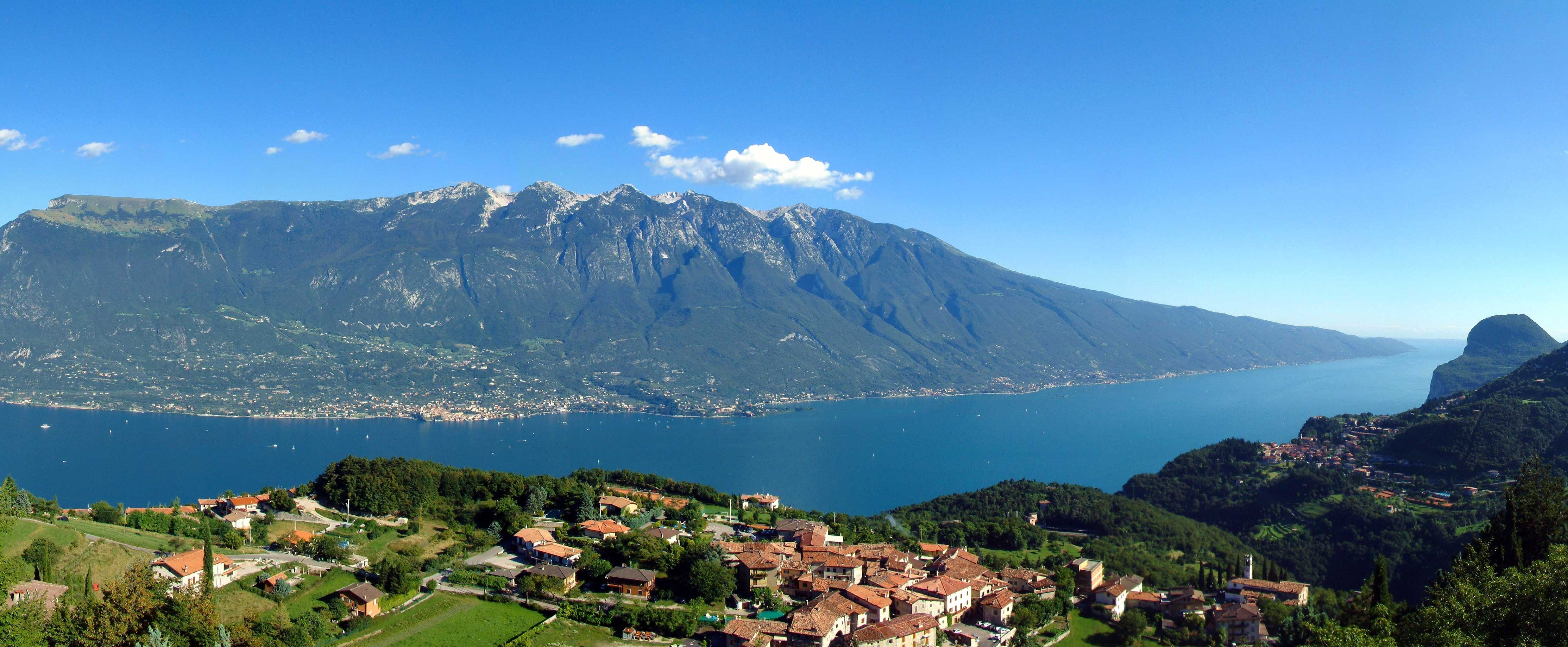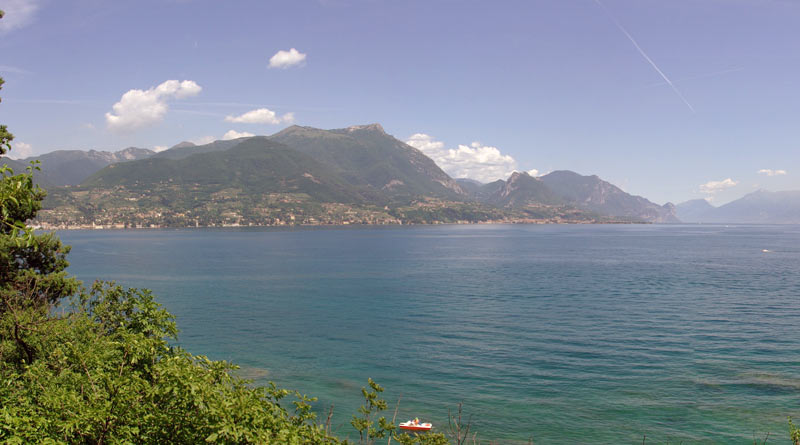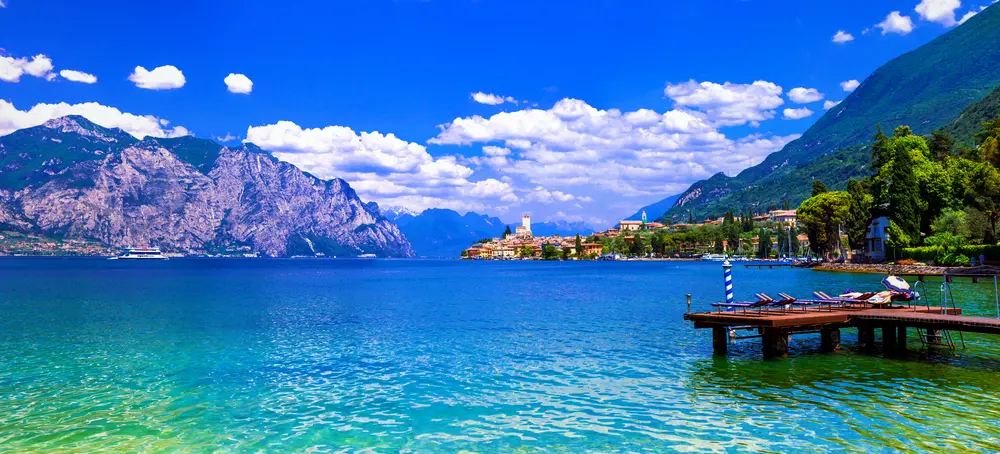Garda Lake

Lake Garda or Benaco is the largest Italian lake, with an area of ​​approximately 370 km² (third in depth after Como and Maggiore). Hinge between three regions, Lombardy (province of Brescia), Veneto (province of Verona), Trentino-Alto Adige (province of Trento), it is placed in parallel with the Adige, from which it is divided by the Monte Baldo massif. To the north it is narrow funnel while in the south it widens, surrounded by morainic hills that make the landscape sweeter. The lake is an important tourist destination and is visited by millions of people every year.

The northern part of the lake is located in a depression that insinuates itself in the NE-SW direction within the Alps, while the southern part occupies an area of ​​the high Po Valley: therefore, a valley and a foothills section are distinguished, the first narrow and elongated, the second broad and semicircular. A characteristic of Garda is the limited size of the water catchment area (2290 km²) with respect to the lake surface: at a length of 52 km the lake corresponds to 95 km of the basin, while the respective widths are 16 km and 42 km. The eastern watershed of the Benacense river basin has a direction parallel to the axis of the lake, while the western one has a more sinuous course. Inside the basin the major reliefs are the Presanella peak (3556 m) and the Adamello mountain (3554 m), and the Monte Baldo (2218 m), located east of Lake Garda even if most of the territory is included. between 65 and 1500 m. Morphologically, the Garda water catchment area can be divided into four areas: the plain of about 200 km², the lake surface of about 370 km², the western portion of about 500 km² and the eastern portion of about 1040 km².
The waters of the lake bathe numerous municipalities in the province of Brescia (Sirmione, Desenzano del Garda, Lonato del Garda, Padenghe sul Garda, Moniga del Garda, Manerba del Garda, San Felice del Benaco, Salò, Gardone Riviera, Toscolano Maderno, Gargnano, Tignale , Tremosine sul Garda, Limone sul Garda), Verona (Peschiera del Garda, Castelnuovo del Garda, Lazise, ​​Bardolino, Garda, Torri del Benaco, Brenzone, Malcesine) and Trento (Riva del Garda, Nago-Torbole, Arco). In the lake there are five islands, all of which are rather small. The largest is the island of Garda, on which in 1220 St. Francis of Assisi founded a monastery, suppressed in the eighteenth century, and on which today stands a nineteenth-century Venetian neo-Gothic style building. A short distance away is the second largest island, the island of San Biagio, also called "dei Conigli" because in the 16th century there were numerous hares and rabbits that offered abundant hunts. The island, located at the south-eastern end of the Gulf of Manerba del Garda, is a short distance from the coast and can be reached on foot in dry periods. Along the eastern shore there are three other islands, all of modest size, located in the surroundings of Malcesine: the northernmost is the island of Olives, then there is the island of the Dream, which is also accessible in dry periods on foot from the coast, and finally the southernmost, the island of Trimelone (or Tremellone).
Map: Garda Lake
Address: Verona
Garda (VR) Veneto
Latitude: 45.4990752
Longitude: 10.607802
Site: https://www.visitgarda.com/it/...
vCard created by: CHO.earth
Currently owned by: CHO.earth
Type: Area
Function: Park
Creation date: 21-02-2020 05:21
Last update: 23/05/2022
